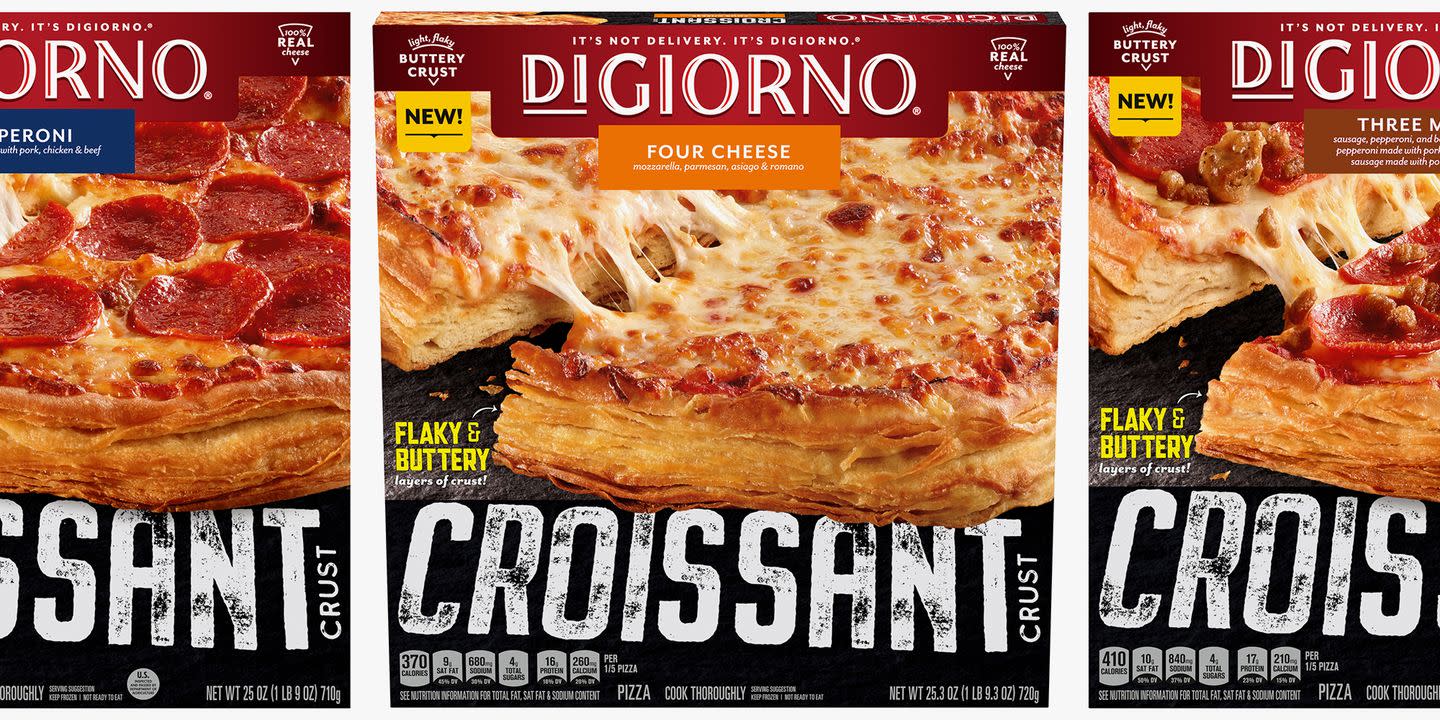
Nobody asked for a frozen pizza with a croissant crust. Especially in the middle of a pandemic (don’t correct me if I’m wrong, I hope no one asked). But, courtesy of DiGiorno -- American frozen pizza extraordinaire -- meaty, cheesy and pepperoni versions of this Franco-Italian-American mash-up will nose their way into supermarket freezer cases later this year.
Will people buy it? And if so, who? Will their interest be enough for sustained production? Is this the kind of meal people want to keep in their freezers?
I believe that while it might garner early headlines, this hype-driven (headline-aware) innovation ultimately overlooks the reasons and occasions that drive people to choose frozen meals over fresh ones. In misunderstanding why people buy frozen food, DiGiorno fundamentally misunderstands how young people approach indulgent foods and their diets.
According to Megan Smargiazzo, DiGiorno’s brand manager, the product was developed because: “Food mashups continue to drive culinary creativity and inspire a fun connection for people. We're excited about adding DiGiorno Croissant Crust Pizza to the list of unexpected food trends, especially as people spend more time eating at home right now and want true comfort food."
While combining a croissant and a pizza is undeniably a mash-up -- and one that references NY-based pastry chef Dominique Ansel’s venerable seven-year-old cronut -- croissants are no longer novel as a pastry riff. We’ve now seen croissant franken-pastries leave coastal cities and resurface in Walmart as a croissant-taco, on social media as quarantine-approved breakfast cereal and in Godiva’s cafes as croissant-waffle sandwiches. As Whitney Filloon argued on Eater, the drive toward mash-ups, or “culinary creativity” as Smargiazzo calls it, has turned the croissant into a performative, Instagram-ready dish. People are no longer eating croissants to enjoy them, rather they seek them out to demonstrate their culinary capital.
But gastronomic showmanship struggles to reconcile with comfort food. When people eat to perform, they’re more concerned about appearance than taste. While a butter-saturated base might signal indulgence, as does pizza itself for that matter, the frozen format trades on practicality. In fact, mass market frozen pizzas are becoming defined by better-for-you options, like cauliflower, almond flour and broccoli-based crusts. Mass-market frozen pizza is no longer a go-to comfort food, but rather a practical option for busy weeknights when you want to balance pleasure with diet-conscious eating (whatever that may mean for you).
This entire frozen food category is undergoing this comfort-to-practical shift. Recent studies have dissected that, especially among older Gen Z and young Millennial consumers (I hate generational differences like this, but it’s how market research differentiates age groups), frozen food has become a matter of health convenience. A 2019 study found that 43% of Millennials were increasing purchases of frozen foods, while on-package claims for non-GMO, organic and gluten-free had all increased (Natural Products Insider, 2019). Rather than purchase family-sized lasagnas, people are looking for shortcuts that make eating “healthy” easier.
These are also the age groups most open to experimental indulgence in their diets. It’s easy to see that they’re the ones who populated the now nationwide Smorgasburg festivals, but this same palatable curiosity is filtering into their daily routines. Seven out of 10 Millennials say they prefer snacking to regular meals (Mondelez, 2019). This snacking habit means mealtime is saved for special occasions and can retain traditional quality markers: it’s freshly made, involves carbs and fats and proteins, is eaten with other people and may be eaten out of home. Frozen food for this generation isn’t about a quick Friday-night fuss-free hedonism, but rather a utilitarian tool to enable them to unleash that hedonism in other, more sociable situations.
This gap is why I believe a croissant crust frozen pizza is fundamentally flawed. If Domino’s or Papa Johns or, even NYC’s Sauce Pizzeria, came out with a similar product, I’d roll my eyes and ascribe it to the indulgent-embracing habits I described above. But the gap between ordering out and raiding the freezer has become an increasingly significant one, especially for a largely (and increasingly) cash strapped generation. It’s not the croissant crust that is flawed -- heck, it’s probably irresistible -- it’s the fact that it sits in my freezer until I determine the moment to heat it.
Have you come across an especially weird food recently? Send it to me! I’d love to try and make sense of where it fits into our modern eating landscape and describe it in a post. In return, I’ll offer you a blog post and some random research gems, like this report on the Croissant Forming Machine Market.






















